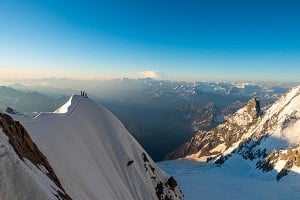
Peter Metcalfe and Neil Carruthers share their experience and tips for climbing the popular Via Cassin on the NE Face of Piz Badile. 'Are you a mid-range UK-based climber who's collected a decent amount of Alpine experience over the years and fancies a go at one of the classic North Faces in the Alps? We were and we did, and this is what we learned.'
In 1937, over the course of three days, Riccardo Cassin and his two friends forced a line up the massive NE Face of Piz Badile in the Bregaglia on the Swiss-Italian border. It was an amazing feat of mountaineering, route-finding and endurance. Two members of another Italian party attempting the route who had, already exhausted, joined Cassin's team, died from exposure and exhaustion on the descent into Italy.
The Via Cassin (TD), or simply "Cassin", is now a frequently-ascended but much sought-after "tick" for the Alpine climber. Although regarded as one of the great Alpine north faces it is also considered the easiest. The now standard approach is non-glacial, the route is pure rock-climbing and the rock generally sound, thus objective dangers are minimal- apart from the weather. Its aspect and form (Badile means "shovel") means that a storm would quickly make the face a very serious place to be, with any precipitation on the upper reaches being funnelled down the route. In addition, the descent can be as problematic as the ascent, with the choices of a gruelling abseil down the North ridge or traverse over the summit and descent of the Voie Normale on the South (Italian side)
However, any climber who has seen the Badile and the perfect line of the Cassin will be drawn again and again to pondering its ascent. So, is it a viable proposition for a mid-range (HVS-E1) UK climber with a reasonable amount of Alpine experience on less committing and technical undertakings? The first and most obvious thing to point out that it is, by any standards, a long route: between 800 and 900m in length depending on whether the lower grade 3 pitches are included. This translates into around 18-22 pitches, although again this depends how much of the easier ground is run together. It is sustained at F5a-6a with limited fixed protection, equating to about UK VS 4c-HVS 5a.
Neil and I had pored over topos and descriptions and felt like we knew every pitch. Over the years us we had both undergone an intermittent but reasonable Alpine apprenticeship. We were regularly climbing around E1, were physically fit, and felt ready for the challenge.
After a slog up to the twee but friendly (and pricey) Sasc Fura refuge at 1900m we made a reconnaissance of the approach to the start of the route from the base of the North ridge at 2560m. Although a useful exercise – the route is not all that obvious by head torch at 4.30am and it highlighted how little acclimatisation we'd done. Hearts pounding and lungs pumping, legs leaden, we wondered how on earth were we going to do this in the early hours of tomorrow morning with a full rucksack then go on to do a massive Alpine face?
It was 4am in the Refuge and we tried to cram down some bread and jam. There were about five teams, mostly Italian or Swiss, heading for the Cassin and others for the North Ridge. It is about one and half hours to the base of the North Ridge, from which there is a short abseil to the ledge giving the"Attaque Direct" to the Diedre Rebuffat; the original start via the Cengalo Glacier is not longer viable due to its retreat and generally diabolical state.We could hear it collapse periodically during the course of the day.
We arrived first at the foot of the Diedre Rebuffat around 6.15am. The corner was still damp as the morning sun crept down the face, and the climbing felt hard for a mere F5a. We ran the following easier pitches together, now in the full glare of the rising sun. The next F5c+ was a serious rising traverse with some pitons in place, but I was glad of our full rack of cams. Despite our head start the other teams were pulling away from us with incredible skill and slickness.
After a steep F5b pitch we ran out around three rope lengths all the way to the Cengia Mediana, the large ledge at mid height. Although this felt strenuous and committing it was in retrospect the only way to keep to schedule given our lack of practice in slick Alpine climbing. The ledge is large and comforting and was currently accommodating the majority of our companions waiting for teams above them to complete the crux. Eventually it was our turn. Neil took the lead. It's an open groove followed by a steep corner then an easy traverse out right. It feels a sustained UK HVS (5a) but, remember, this is at altitude wearing a rucksack with another 10 pitches to go.
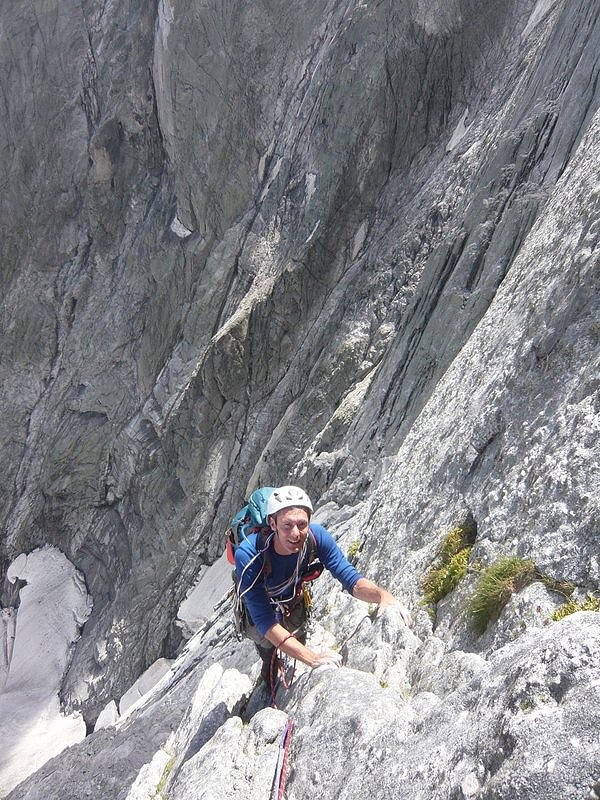
The second "crux", a short traverse under a roof then a layback corner, turned out to be straightforward and shortly we found ourselves well above the second Bivouac Cassin and at the base of the Exit Chimneys. We were now feeling quite relaxed and were possibly even mentally adding the "tick" to our climbing CVs. There were still a couple of teams above us in the chimneys - they seemed to be moving quite slowly.
There were still another six pitches and over 200m of climbing to go. Clouds were swirling up from the Cengalo and the upper part of the face was obscured. Swear words were floating down towards me as Neil fought with the desperately slippery, narrow and awkward initial pitch in the chimneys. Now the clouds were just above us and looking decidedly black and I was getting really cold. Being hit by a storm whilst in these chimneys would be a disaster - drowning could be a distinct possibility. All the other teams had now disappeared and I felt very isolated on this vast face.
The next pitch looked a least a little less strenuous. Hastily I took the lead and got another pitch under our belt. The weather now seemed to be holding off and Neil ran out another 60m at about F5b. The face kept coming at us until the very last, with another pitch culminating in a strenuous pull onto the ridge. It was 5.30pm. Thick clumps of cloud were jostling around us, obscuring everything at one moment then revealing surrounding tops. We heard ominous rumblings across the valley and could sense electricity in the air as we simul-climbed the last of the ridge to the summit in about an hour. Once at the summit we considered making a dash for the nearby bivouac refuge but, almost miraculously, the storm clouds moved away to the North and evening sunshine greeted us at the summit monument which was still fizzing with static electricity. We made the decision to make the long descent to the Gianetti Refuge in Italy and a well-deserved bowl of soup and large beer.
So, is the Cassin a good objective for an experienced UK-based climber competent around E1, with decent but not vast amounts of Alpine experience? Difficult to say. We managed it, obviously, but maybe we were just lucky - weather reports had suggested storms later in the afternoon, and if these had moved whilst we were on the face then it would have been a very different story. We could have done with cutting an hour or two off our time - 3pm was our target for reaching the ridge. Acclimatisation might have helped speed our climbing, however the best way to improve your speed on long routes is to practice doing them! I would therefore suggest that, if restricted to the UK for training, you should seek out multi-pitch routes on mountain crags and aim to climb several in a day. A combination of hard and easy pitches run out or moved together on would be ideal. In the Lakes, a suggested itinerary would be Grooved Arete on Pikes Crag (180m VD) followed by Central Buttress (E1, 120m) and Moss Ghyll Grooves (MVS, 100m).
If you can manage that easily in a day wearing rucksacks and have spent a few day acclimatising, you should be well prepared. But as ever, it's up to you to decide and take responsibility.
Logistics
Accommodation Advertise here
No Premier Listings found in this area
A friendly, quiet valley base on the Swiss side is at Camping Mulina on the way out of Vicosoprano at the base of the Maloja Pass. Sasc Fura Refuge (SAC) is the base on the Swiss side. Gianetti Refuge (CAI) at 2500m on the Italian side. Both give discounts for members of affiliated clubs such as the Austrian Alpine Club. Self-catering available and hot water for sale at ~3euro/L.
Getting to The Route
From Bondo take the unmade road up Val Bondasca to the parking at its end the (10CHF charge from ticket machine before barrier). One and a half hours walk from here to the Sasc Fura refuge. Add another one to one and a half to the base of the North Ridge where there are plenty of bivvy options.
Food and Water
At least 2L of water each and plenty of easily accessible snacks. Chocolate, cake and energy bars are sold at the refuge
Gear
We ran with double 60m ropes but 50m should be OK as abseils on Italian side are set up for doubled 50m ropes. Many European teams were using triple rated singles, however, which is certainly worth looking at.
Fixed protection is limited to pitons, although now most stances are equipped with double bolt belays. Take a good selection of cams and a single set of wires. Twelve quickdraws will be enough but take some longer ones and slings as they are useful to avoid rope drag on the longer pitches.
The approach and descent can be done in approach shoes. If the access ledge is snowy (ask the guardian at the Sasc Fura) then strap-on crampons such as Katunas might be useful; they certainly will be if walking back from Italy over the Passo della Porcellizzo.
Outdoor Shops Advertise here
No Premier Listings found in this area
Guides
The topos in the Alpine Club guide and the Bregaglia Climbing 2011 guide available online describe the original route, which has now been superseded with a version featuring longer pitch lengths and an alternative finish that avoids the grotty rock of the original. It is worth seeking out the version (available in French, Italian or German) that gives the modern version, particularly as this coincides with the bolted stances. There are numerous intermediate stances utilising pitons of various vintages and (un)trustworthiness.
Instructor/Guides Advertise here
No Premier Listings found in this area
Descent
It's worth saying a little more about descent options as there is some debate about whether it's best attempt the North Ridge descent back to the Sasc Fura or to continue down the south side of the mountain into Italy and the Gianetti Hut. Abseil descent of the route would be a massive undertaking, but an emergency descent could certainly be made to the Vire Mediante from any part of the upper section. Obviously we can't give any details regarding the North Ridge option other than to say we were warned off it by many people including the guardian at the Sasc Fura hut. According to the Bregaglia Climbing 2011 guide it requires around twenty abseils and difficult route finding. Knowing how we felt at the top of the Cassin this certainly wasn't what we wanted. The alternative is to traverse the summit ridge at about IV (45min-1hr) then descend the Voie Normale in about 5 abseils. The description in the Bregaglia Climbing 2011 guide is less than helpful here. From the strange space needle monument on the summit scramble down the loose gully on the left (looking down), then follow the line of abseils at 25 intervals (look for large rings) marked by red paint splashes. At the base of the gully follow the obvious path R to a final abseil from the large metal cross then scramble down the E side of the ridge. About 45 minutes from there to the Gianetti.
The walk back to Switzerland via the Porcellizzo and Trubinasca passes is gruelling but possibly worth doing for the scenery: it took us the best part of a day. The best option is undoubtedly to arrange a lift from Val Masino or to get dropped off at the start. It is also probably possible to get back to Bondo by public transport as there is a train from Sondrio to Chiavenna and a regular bus service from there to San Moritz.



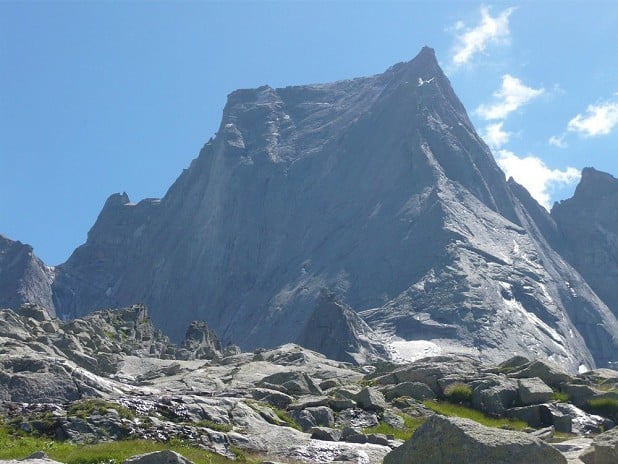

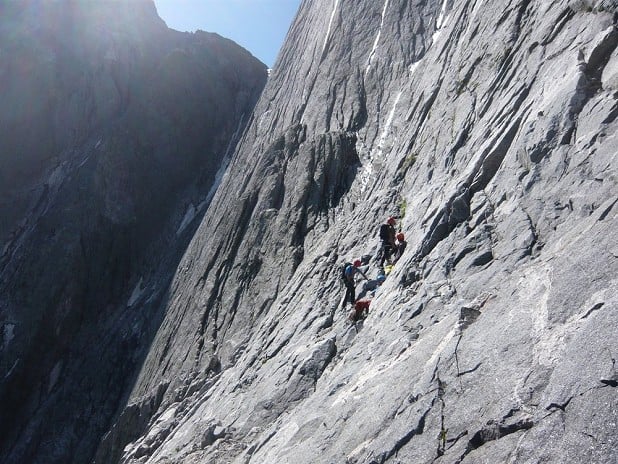

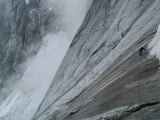

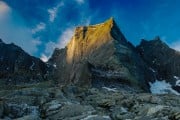

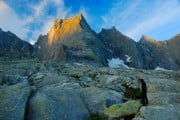
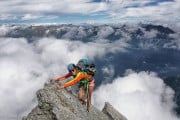

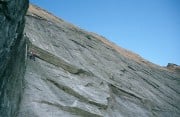
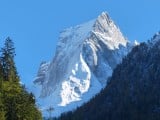
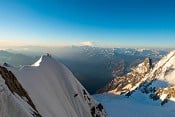
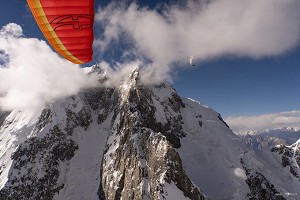
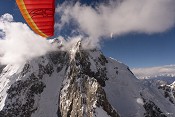
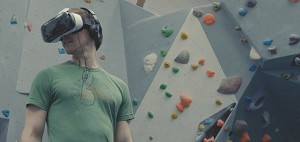




Comments